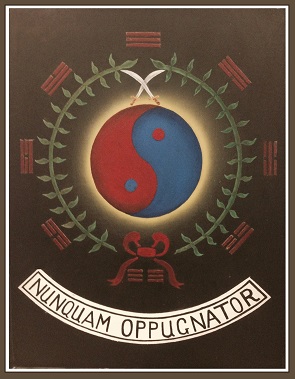A few Club Group Photo's
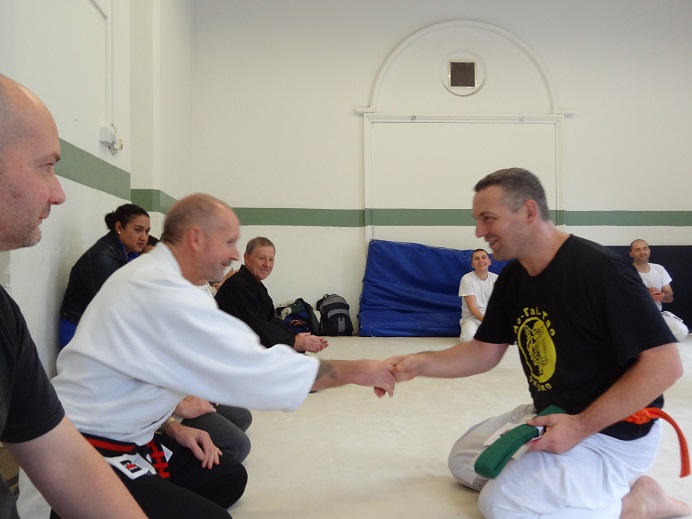
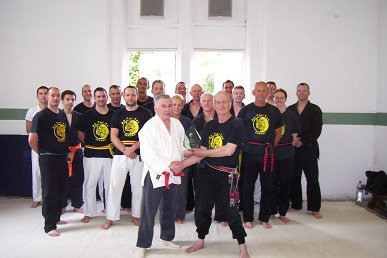
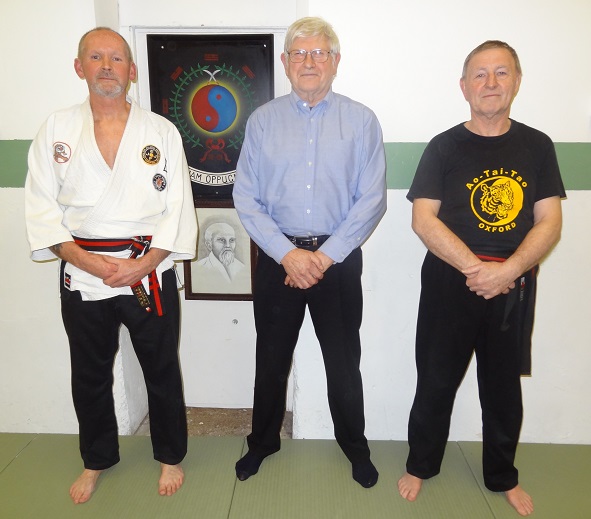
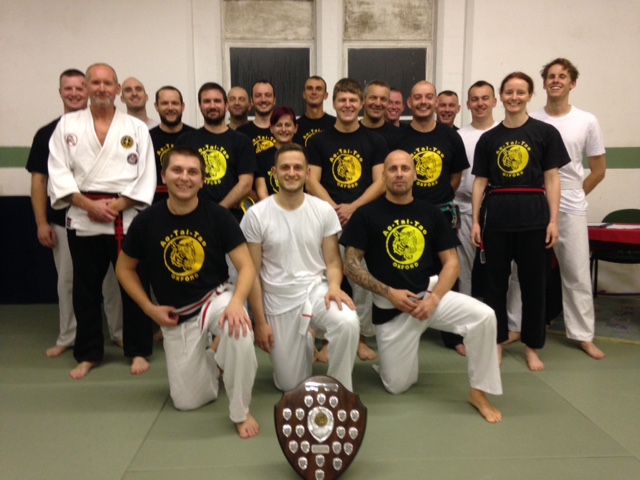
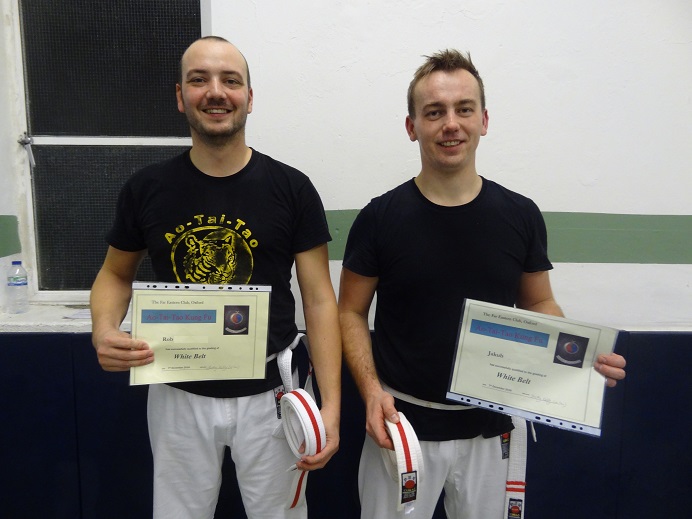
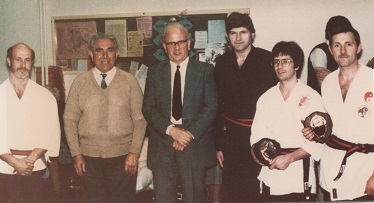
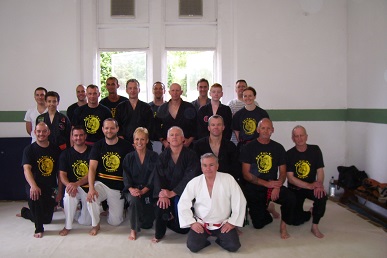
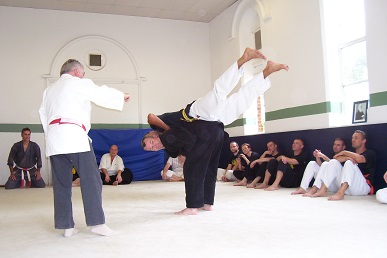
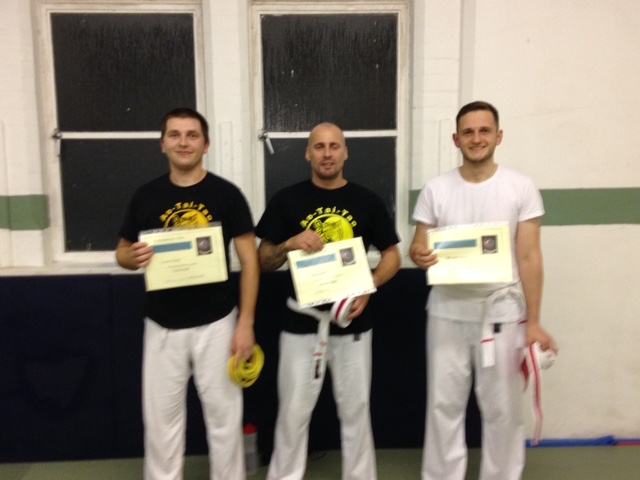
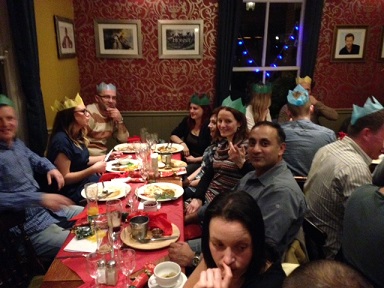
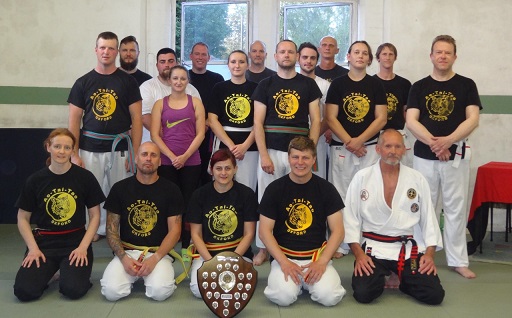
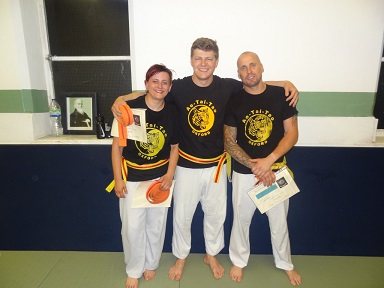
Our club`s roots are in Kung Fu as was practised in China and Mongolia. The earliest form was based on instinctive reactions of self-defence, relied on muscle power and was called `Go Ti` meaning `horn gore` as early practitioners tied horns to their heads and charged at each other. The Japanese interpretation for Go Ti is now the familiar form known as `SUMO`. The first recorded date for Go Ti is 2865BC.
Our `WHITE TIGER` martial art style of Ao Tai Tao (ATADO) was created in the 1950s by Malayan born Grand Master `Edward` Leong Fu (1932 – 1991). He was the son of Chinese immigrants and became proficient in Kung Fu styles by the age of 12 through the guidance of local monks.
`Edward` learned Ju Jitsu as a teenager from Japanese officers who invaded Malaya in the 1940s. He also learned Judo and became a black belt in the 50s. From his learning of different martial art styles - Aikido, Judo, Ju Jitsu, Karate and Kung Fu, Leong Fu developed a system called “ATADO” for western servicemen stationed in the Far East after WW2 - a few of whom became instructors.
Leong Fu was spotted by an American promoter who encouraged him to pursue a professional wrestling career in Europe and Asia which saw him tour internationally until he retired from the ring around 1963. He was a generous man who gave his time freely to all who wanted to learn, especially the wrestling moves. Leong Fu left his martial art teaching to his senior instructors when he was in his 50s and in 1991 he passed away, aged 59.
The local Oxford `Far Eastern Club` was founded in 1968 by the late Ernie DANKS who studied martial arts under the Grand Master in Ipoh, Malaysia after WW2. Ernie DANKS was succeeded by Michael BAKER, and from 1984 by Peter SALCOMBE who retired in 2011. The club instructors are now David Rogers, 4th Dan, Adrian Coggins, 2nd Dan and Alan Sowden, 1st Dan.
The club forms part of the English Ju Jitsu Federation.












1944 to 2023, former head of the EJJF
The E.J.J.F. was founded 1970 and is composed of a fusion of widely diverse disciplines that operate wholly independently and offers great benefits regarding its innovative Insurance Scheme along with the opportunity to train with a variety of different people and disciplines.
Our purpose is to share with affiliate clubs the mutual benefits in the form of like minded individuals who gravitate towards the good values and best practices associated within the Family of Martial Arts.
1954 - Enrolled in Jiu Jitsu club aged 9 ¾
1957 - Took up Judo
1959 - Took up Aikido
1960 - Took up Karate
1964 - Went to live and work in London and visited most of the many top clubs there as a guest and was graded. Returned to the West Midlands with: 1st Kyu Judo, 2nd Kyu Aikido, 3rd Kyu Karate.
1966 - Opened club at 425 Squadron ATC Aldridge
1966 - Joined Kyu Shin Kan, Birmingham
1967 - 2nd Dan Atemi Jutsu, Aikido 1st Kyu, Karate 2nd Kyu
1970 - 3rd Dan Atemi Jutsu, 1st Dan Judo and Aikido
1971 - 3rd Dan Jiu Jitsu
1983 - 6th Dan Atemi Jutsu
1988 - 7th Dan Atemi Jutsu
1977 - 4th Dan Jiu Jitsu 3rd Dan Atado (Chinese Kempo) by Master Leong Fu
1983 - 3rd Dan Aikido
1983 - Joined the international Budo federation
1984 - Was invited to be Jiu Jitsu coach on IBF
1985 - Invited again to be Jiu Jitsu coach on IBF
1986 - Invited again to summer camp, and was appointed Jiu Jitsu UK national coach
1987 - 6th Dan Jiu Jitsu.

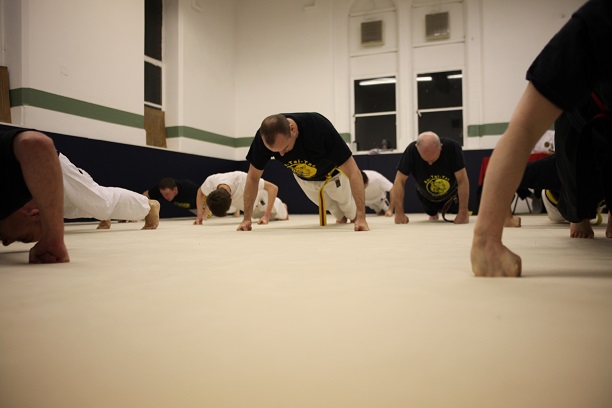
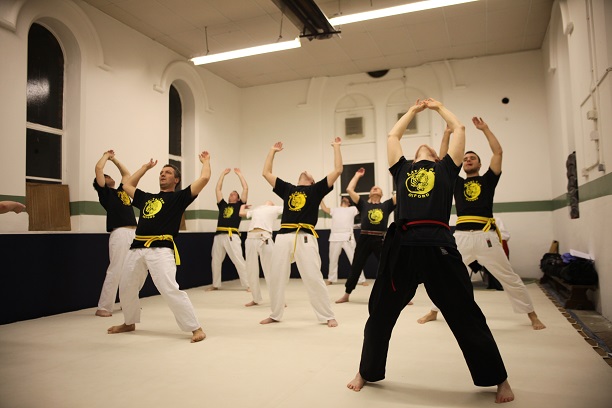
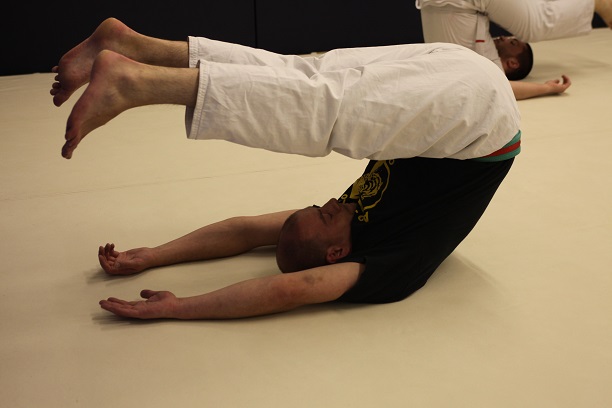
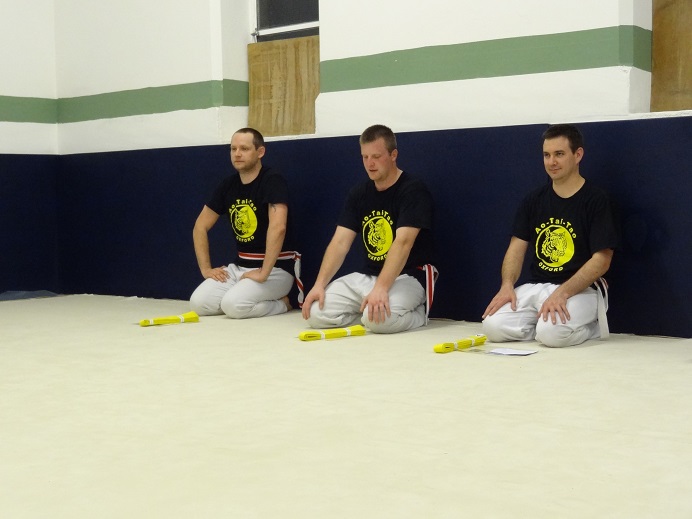
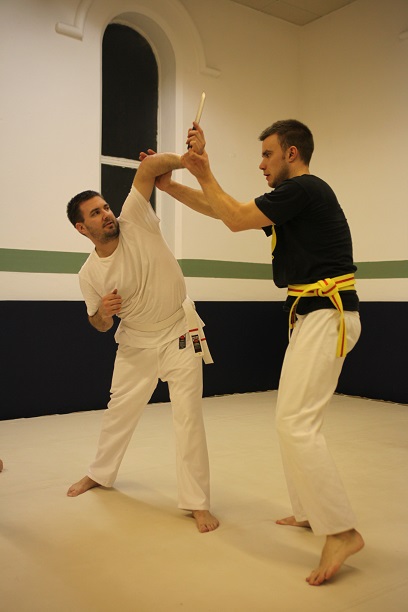
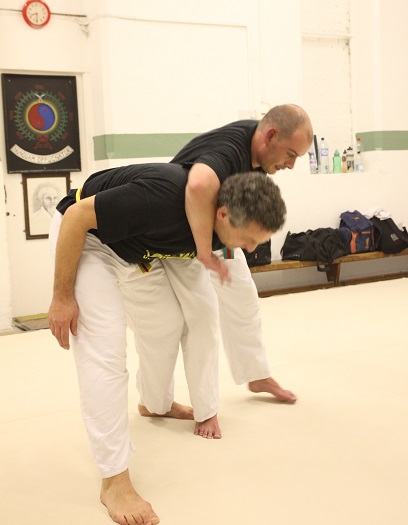
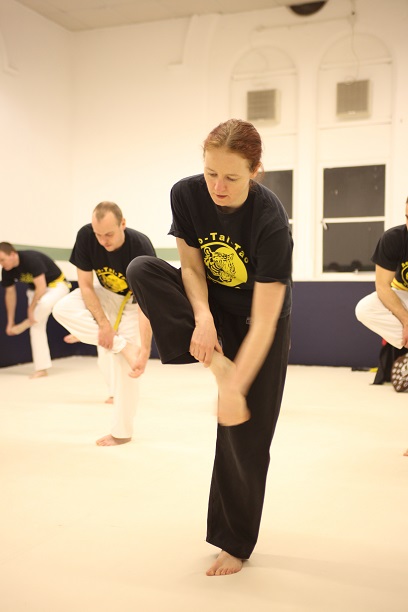
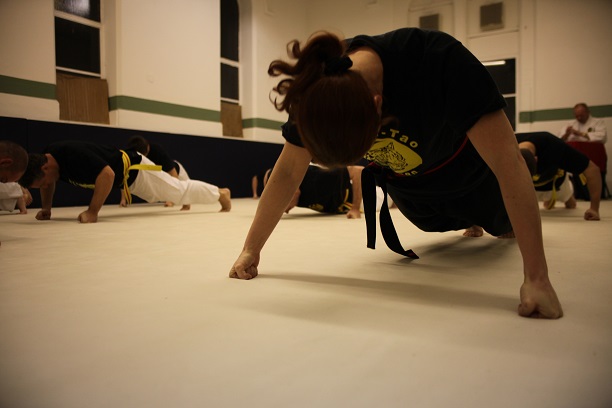
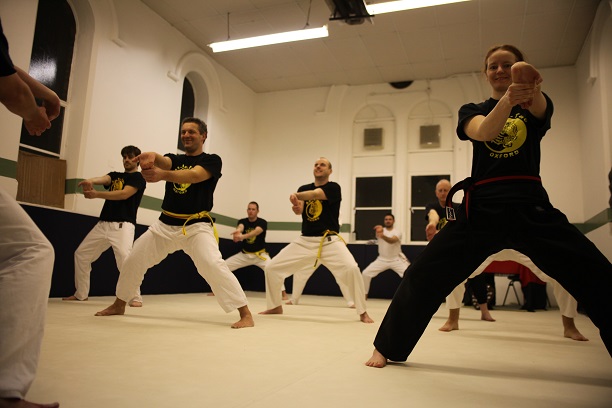
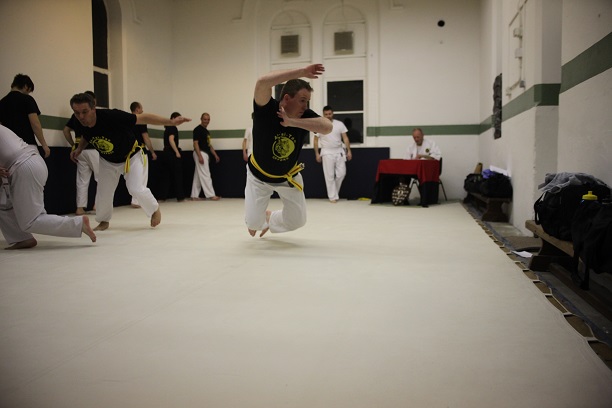
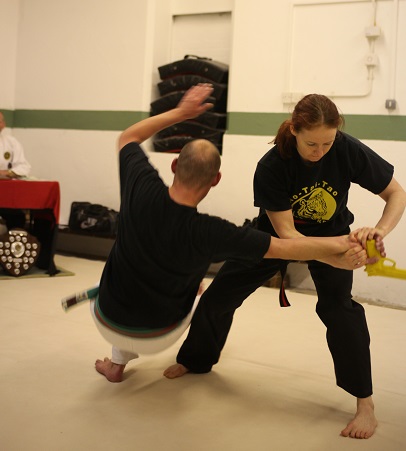
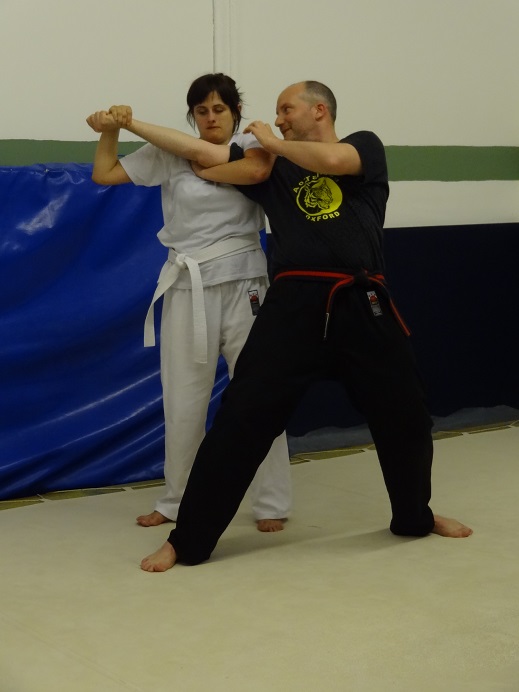
Current Club SIFU /SENSEI
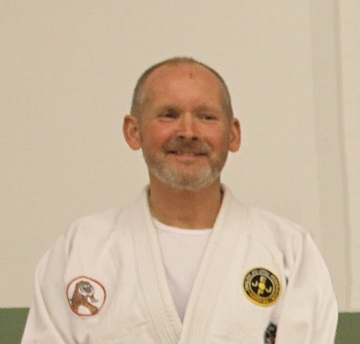
GRAND MASTER LEONG FU
MASTER ERNIE DANKS
MICHAEL BAKER SIFU
PETER SALCOMBE
DAVID ROGERS - SIFU / SENSEI
Roger Gray - April 1984
Russell Riddiford - April 1995
David Caton - April 1995
Darren Goodenough - April 1995
Scott Lacey - April 1998
Alex Kazmi - December 1999
Christian Pattison - December 1999
Jonathan Ball - August 2005
Adrian Coggins - March 2009
Judy Kelly - October 2010
Klaudiusz Nowicki - May 2015
Alan Sowden - June 2019
The shield inscriptions record the occasions when successful members are awarded their first degree black belt (1st Dan).
IN MEMORY OF OUR CLUB FOUNDER ERNIE DANKS
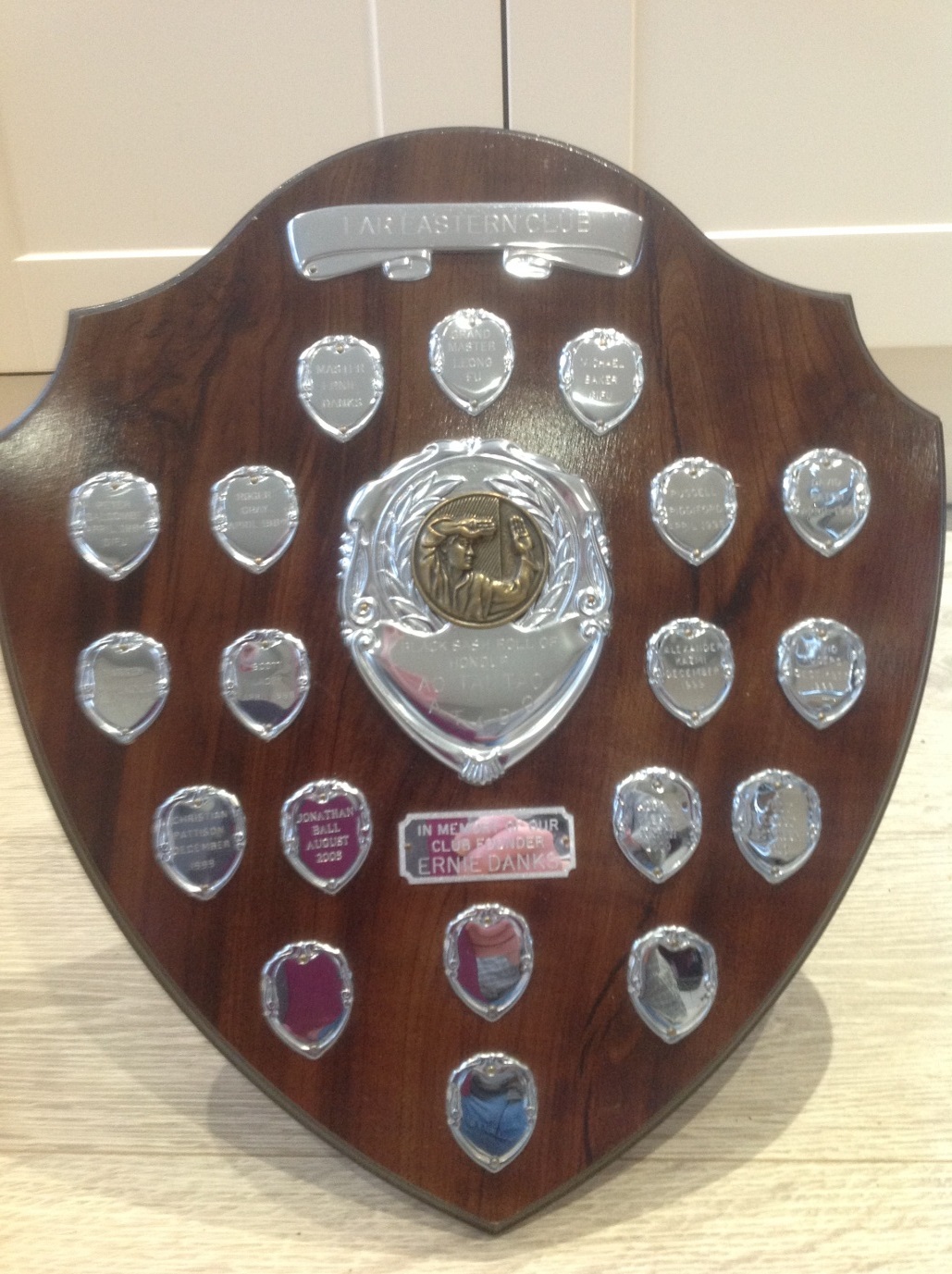








The Far Eastern Club badge was created (as a painting) by our founders (the late) Ernie Danks and Michael Baker and is a permanent feature at the Oxford Club Dojo.
NUNQUAM OPPUGNATOR - Never the aggressor, reinforcing the self defence ethos of the art. The perimeter trigram symbols come from the I-Ching or Yì Jing (pronounced `ee-ching`) and are also known as the Classic of Changes or Book of Changes. The I-Ching is one of the oldest of the Chinese classic texts, the book of which contains a divination system (insight) and in some western cultures and modern East Asia it is still widely used for this purpose.
The 'Yin-Yang' symbol (taijitu) represents opposing forces i.e. passive v aggressive; soft v hard; small v large etc. The `dots` within the symbol signifies that nothing is entirely yin or yang, but each contains an element of the other and the `halo` effect represents the spiritual influence of the martial art.
The `crossed swords` means that violence exists and cannot be ignored, but should be rejected when possible by laying down the weapons.
The `olive branches` are the symbol of peace which is always achievable.
The `tied bow` represents the sash (ceremonial) worn by seniors, which currently is only awarded at first Dan, other students wear conventional belts.
The `trigrams` translate into a series of individual attributes from the Hexagram table - simply put they can signify `cause and effect, spiritual and physical` - the merging of Yin and Yang working together.
The text of the I-Ching is a set of broad statements represented by 64 sets of six lines each called hexagrams. Each full hexagram is a figure composed of six stacked horizontal lines, each line is either Yang (an unbroken line) or Yin (broken line). With six such lines stacked (and read) from bottom to top there are 64 possible combinations.
Trigrams - (read from the bottom line upwards)
The I - Ching Tri-grams (3 lines), Hexagram translation (relative to our Club Logo) is as follows:
Translation
Right top: Blending
Right Middle: Awareness of danger
Right Bottom: Non resistance
Bottom: Open, Receptive (bottom of badge)
Left Bottom: Being the centre (circle theory)
Left Middle: Controlling
Left Top: Movement
Top: Managing force, adaptability
The solid line represents Yang, the creative and powerful principle. The open line represents Yin, the receptive embracing principle. These principles are also represented in a common circular 'Yin-Yang' symbol (taijitu) expressing the idea of `complementarity of changes` - when Yang is at the top, Yin is increasing from below, and vice versa.
Circle Theory in one context means the creation of dual circular movements - e.g. an attackers` forward movement is drawn in by the victim, the victim using their body and/or arms makes a purposeful concise circular motion to blend with the attacker who is then taken off balance or thrown as a larger circle (Yang) around the smaller stable circle (Yin) of the victim.
